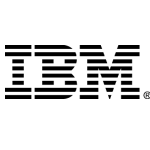Over cookies op deze website Onze websites hebben een aantal cookies nodig om goed te kunnen werken (verplicht). Bovendien kunnen andere cookies met uw toestemming worden gebruikt om het gebruik van de site te analyseren, de gebruikerservaring te verbeteren en voor publiciteit. Raadpleeg voor meer informatie de opties voor uw na te kijken. Door onze website te bezoeken, gaat u akkoord met onze informatieverwerking zoals beschreven in de IBMprivacyverklaring. Om een vlotte navigatie mogelijk te maken, worden uw cookievoorkeuren gedeeld door de hier vermelde IBM-webdomeinen.
Generic
What you need to know about the hybrid cloud
27/09/2017 | Written by: Think Blog Editor
Categorized: Generic
Share this post:
The hybrid cloud enables organizations to seamlessly address the desires and requirements of the business. Newcomers and existing companies apply the IT model in diverse sectors to be able to operate quicker, more flexibly and cheaper based on new technologies. In spite of the many advantages, for those responsible for IT and the business, the same questions constantly keep coming up regarding the hybrid cloud. A handy e-book has recently been created especially for them: ‘Hybrid Cloud for Dummies‘. This blog covers a few of the highlights from this e-book.
Seamlessly linked
For those who do not yet know: the hybrid cloud is an IT environment that consists of an integrated combination of public and private cloud services, other cloud suppliers and one’s own data centers. So-called ‘application programming interfaces’ (APIs) handle the mutual connections. An adequate management environment focuses on items such as insight, control, availability, security and management of the workloads, etc.
Download whitepaper: Hybrid IT Management >
Invisible IT
The hybrid cloud is actually a virtual computer environment, which – based on its various components – is able to deliver the exact service level and flexibility desired for the customer, business, consumer and end-user. Even though the service provision is frequently based on multiple, seamlessly linked components – some in the public cloud and others in one’s own data center, this is all completely transparent for the user. The underlying IT infrastructure is thus becoming more and more invisible.
Interaction
The great thing is that the hybrid cloud combines the so-called ‘systems of engagement’, such as mobile apps or a web environment, with the ‘systems of record’. In practice, a company can interact with consumers, customers or end users via a mobile or web-based front-end in the cloud, while the transaction processing takes place on traditional systems in the data center in the back office. At the same time, a specific cloud service can conduct a credit check, for example, or perform a different service. During peak moments, extra capacity from public cloud suppliers can be utilized.

New possibilities
The public cloud can also be used to experiment with new business models and applications: quicker innovation, continued development, automatic software delivery, and a continual learning and improvement process based on the right feedback. Within a so-called DevOps environment, people within the IT, operations and development departments utilize different elements of the same tools and techniques based on Platform as a Service (PaaS). Based on consistent processes and automated delivery, all technologies, ideas and stakeholders come together. As previously stated, continuous feedback from customers and end-users leads to continual improvement.
Data-driven
Another unique aspect of the hybrid cloud is fast access to data, for example for optimizing specific and generic processes, as well conducting analyses. Thanks to the seamless linking of front and back office, data flows from the user to specific applications and tools for analysis or other forms of artificial intelligence (which may or may not be cloud-based). This way, the customer can be better served, based on preferences or data obtained externally via APIs, for example.
The hybrid cloud is, in short, the ideal starting point for companies that want to act quickly and efficiently using (a combination of) applications, infrastructure, storage, platform technologies for developing and deploying software and business processes. Complete transformations of operational and business models even lie within reach.
Try for free: Cloud Automation Manager >
More stories
Automate work and accelerate business growth
Many companies need help to navigate the rapid changes that define today’s business environment. To improve their responsiveness and flexibility, they are looking for new ways of conducting business, rethinking their processes, and investing in digital transformation projects to increase the robustness of their operations. They rely on business automation technologies to cut out repetitive […]
Sustainability and the technologies enabling the transition
Creating a sustainable future demands significant technological innovation to decarbonize society, restore biodiversity and ecosystem health, foster thriving oceans for sustenance and economic growth, remove atmospheric carbon, transition to sustainable agriculture, and advance eco-friendly cities that align with our vision for a better future. Generative AI has achieved much in recent years and now surpasses […]
Technology in action at Think Summit 2021
Covid 19, the energy transition and climate change require business agility… right away! Organizations that are slowly starting their digital transformation are irrevocably overtaken by competitors: companies that can quickly realize new, sustainable business models with a remote workforce. How can organizations leverage innovations such as AI, machine learning and hybrid cloud to make […]































